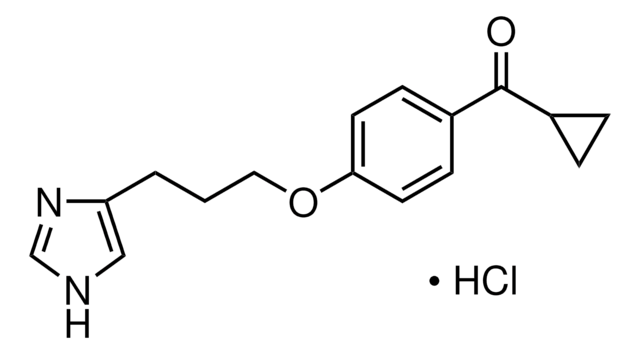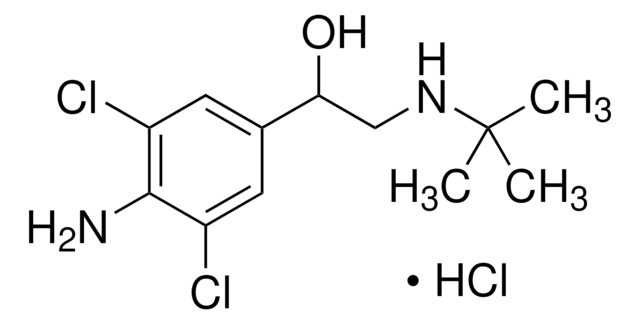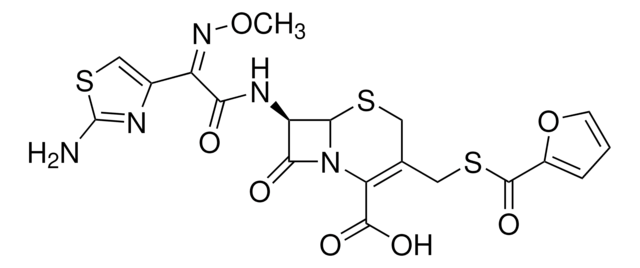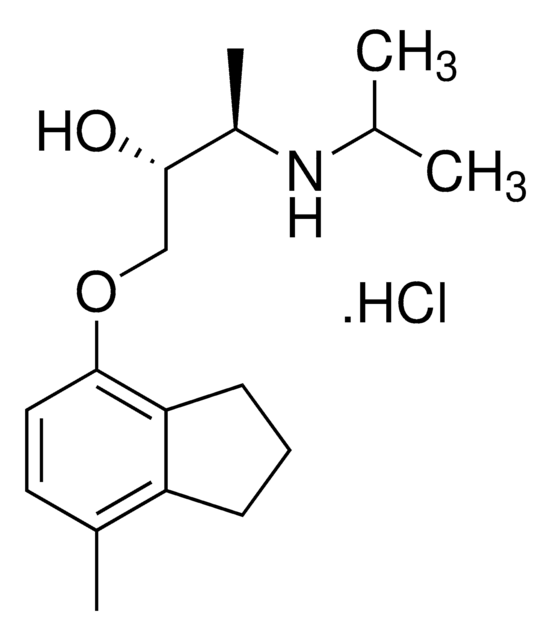C6848
Ciproxifan maleate
≥98% (HPLC), powder
Synonym(s):
Cyclopropyl (4-[3-(1H-imidazol-4-yl)propyloxy]phenyl) ketone maleate salt, FUB 359 maleate salt
About This Item
Recommended Products
Quality Level
Assay
≥98% (HPLC)
form
powder
color
white to beige
solubility
DMSO: 32 mg/mL
H2O: insoluble
SMILES string
OC(=O)\C=C/C(O)=O.O=C(C1CC1)c2ccc(OCCCc3c[nH]cn3)cc2
InChI
1S/C16H18N2O2.C4H4O4/c19-16(12-3-4-12)13-5-7-15(8-6-13)20-9-1-2-14-10-17-11-18-14;5-3(6)1-2-4(7)8/h5-8,10-12H,1-4,9H2,(H,17,18);1-2H,(H,5,6)(H,7,8)/b;2-1-
InChI key
RLQFKEYRALXXEJ-BTJKTKAUSA-N
Application
Biochem/physiol Actions
Features and Benefits
Signal Word
Warning
Hazard Statements
Precautionary Statements
Hazard Classifications
Acute Tox. 4 Oral - Eye Irrit. 2 - Skin Irrit. 2 - Skin Sens. 1 - STOT SE 3
Target Organs
Respiratory system
Storage Class Code
11 - Combustible Solids
WGK
WGK 3
Flash Point(F)
Not applicable
Flash Point(C)
Not applicable
Personal Protective Equipment
Choose from one of the most recent versions:
Already Own This Product?
Find documentation for the products that you have recently purchased in the Document Library.
Our team of scientists has experience in all areas of research including Life Science, Material Science, Chemical Synthesis, Chromatography, Analytical and many others.
Contact Technical Service








